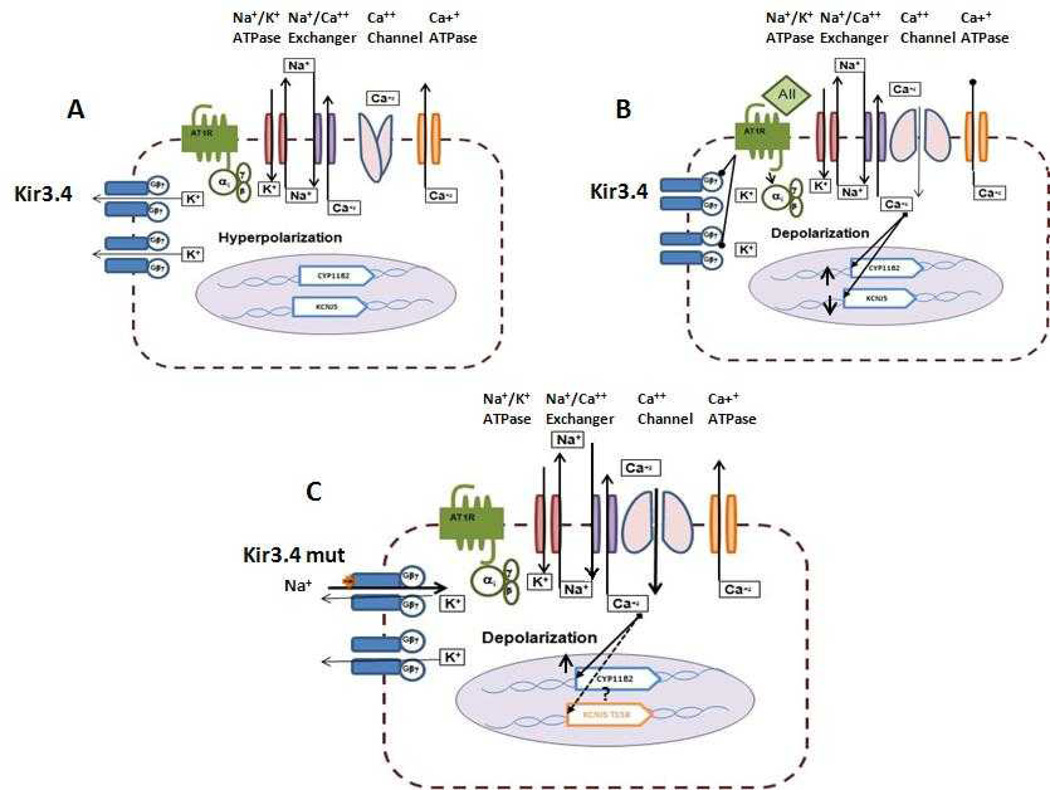Fig 3.
Proposed mechanisms for the action of Angiotensin II on Kir3.4 and aldosterone secretion and for the effect of the KCNJ5-mutation on aldosterone secretion. A. Under basal conditions there is a continuous outflow of potassium through the Kir3.4 channel and in combination with other potassium channels the cell is hyperpolarized and aldosterone is formed in basal quantities. B. Upon stimulation with Angiotensin II there is a decrease in gene expression of the KCNJ5 (Kir3.4) and blocking of the activity of the channel with membrane depolarization, opening of the calcium channels and increase in intracellular calcium with activation of the calcium-calmodulin cascade resulting in increased expression of the CYP11B2 and aldosterone secretion. C. The KCNJ5 mutation (Kir3.4 mut) results in loss of selectivity of the channel with inflow of sodium, depolarization of the membrane, opening of calcium channels and ultimately increase gene transcription of the CYP11B2 and increased aldosterone secretion.

